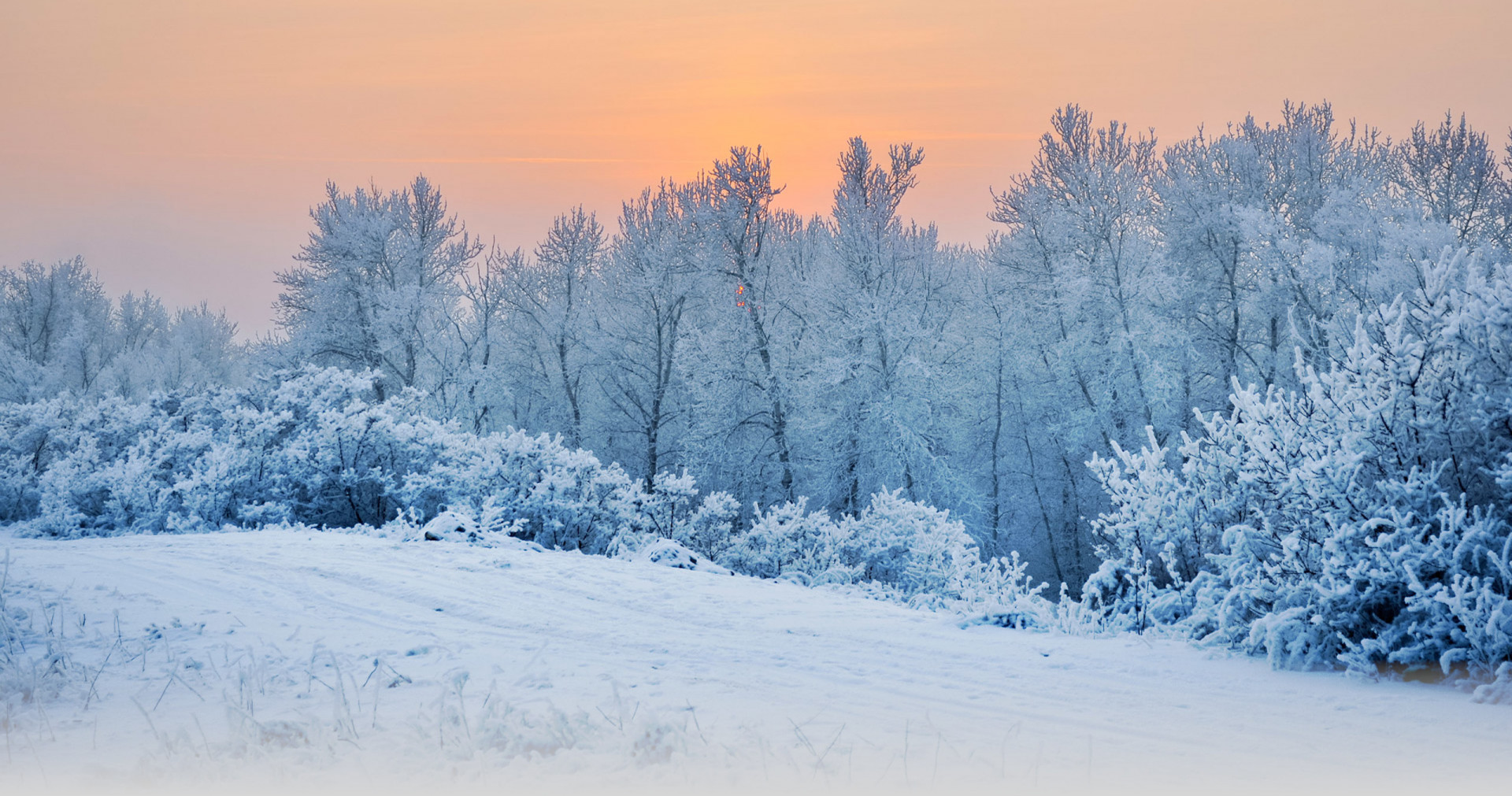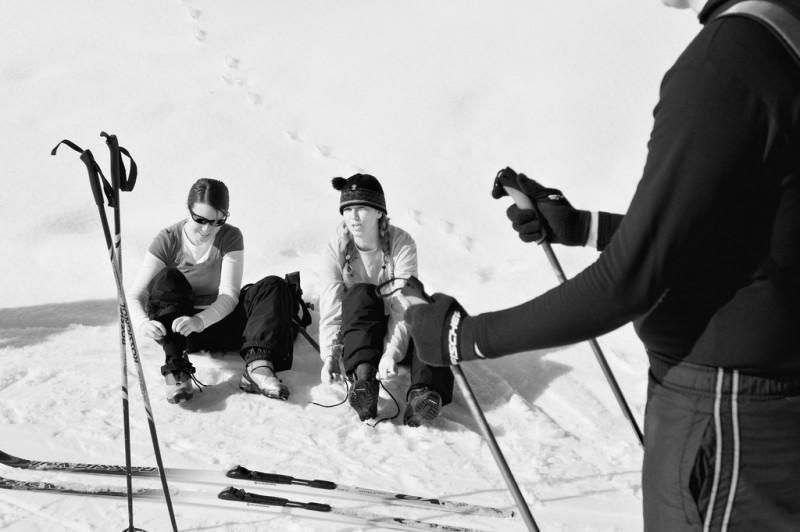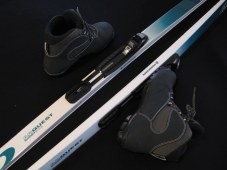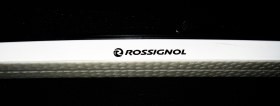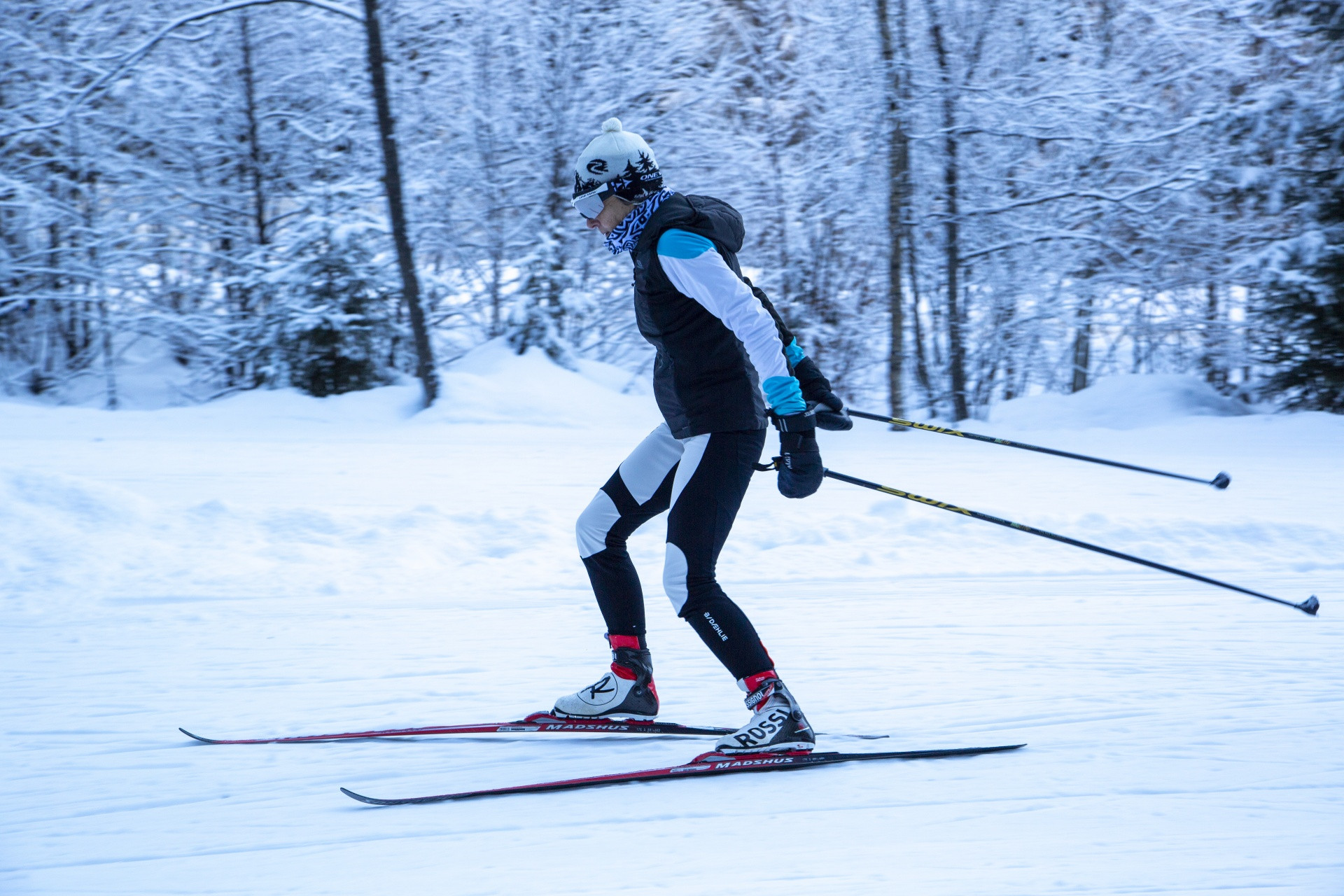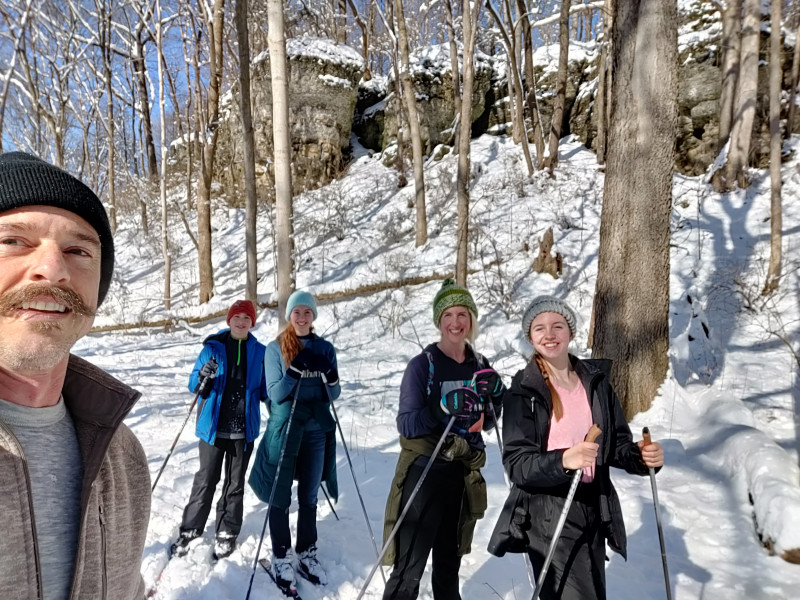News
Pre-Season Conditioning (part 1)
November 12, 2007
Part 1: Stretching to improve flexibility
Cross Country Ski Season is right around the corner. The chill in the air all of a sudden has purpose ...snow is on the way, and you intend to put it good use! There is nothing quite like putting on those XC skis after the first reasonable snowfall, hitting the trails, and cutting in some new tracks for the season. In fact, you'll probably ski a lot longer than you should that first day, your body won't be as prepared as your mind, and the next day you'll wonder what kind of truck ran you over while you were sleeping!
Skiing uses more muscle groups than any other exercise. It requires them to be limber, toned, and coordinated. And there are few activities during the summer that can prepare you for the first days of ski season. Fortunately, there are a number of stretches, balance techniques, and exercises that can put you in top condition for hitting the trails.
Stretching for increased flexibility improves skiing efficiency and reduces injury
You've heard it before, the most important thing you can do before exercising is stretching. Nordic skiing takes this a step further: the most efficient thing you can do for your skiing is stretching. If your goal is to ski smoother, longer, and with little risk of stopping to nurse a cramp, you had better start focussing on your flexibility in the pre-season. There are many common stretches that prepare your legs and hips for extending into a perfect classic stride and glide. And many of these stretches are equally important for improving your balance (part 2). Additionally, stretching the upper body will improve your skiing stance and enable better poling. But most important, these stretches will also help to prepare your body for resisting injuries when the hill you couldn't resist becomes the tangled up fall you couldn't avoid.
Let's take a look at a few stretches that should be a part of your pre-season conditioning, as well as part of your daily ski season warm-up.
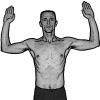
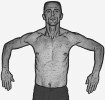
Neck & Shoulders
Neck and Shoulders (Trapezius, Pectoralis and Deltoids)
Think of stretching as a "top-down" routine, and begin by stretching your neck by slowly turning your head left to right, and then tilting left to right, and front to back. Next, stretch your shoulders by standing against a wall with your arms straight out along the wall. Bend your elbows so that your forearms and hands point straight up. Then, rotate your elbows without moving your upper arms, but so that your forearms and hands point down. Hold and then repeat.

Back & Sides
Back and Sides (Latissimus Dorsi and Abdominals)
While standing up straight with shoulders back and feet shoulders-width apart, reach both hands above your head. Then slowly lean to each side, without bending foreward at the hips or shoulders. When your arch is maximized, hold, then repeat, alternating sides.

Thigh & Extensor
Upper Legs and Hamstrings (Gluteus, Adductor, Satorius, Quadriceps, Gastrocnemius)
Begin with a simple thigh and extensor stretch by placing one hand against a wall for balance and then using your other hand to hold your foot behind you. Hold and repeat with other leg.
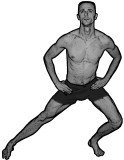
Glutes & Hamstrings
Stand with your feet about 40" apart (more or less based on your hight) and ensure that your hips are rotated properly with your upper body upright, not hunched forward. Then, with hands resting on your upper thigh, bend your left knee and hip and extend your right leg. Hold, and then repeat on other side.

Lower Legs & Feet
Lower Legs and Feet (Extensors and Calves)
Standing in front of a wall or step, raise the front of your foot and place against wall. Then lean into the wall to stretch your calf. Hold and then repeat with the other leg. To stretch your extensors (front of lower leg), hold near your toes instead of your ankle while performing the simple thigh/extensor stretch (above).
--AK
